Acute Leukemias of Ambiguous Lineage
You are here
Acute Leukemias of Ambiguous Lineage
We are missing a sample case. If you have one, please attach it, or contact us and we will help post it.
Definition
Acute leukemias of ambiguous lineage (also known as acute leukemias of undetermined lineage, mixed phenotype acute leukemias, mixed lineage acute leukemias, and hybrid acute leukemias) are types of acute leukemia in which the morphologic, cytochemical, and immunophenotypic features of the blast population do not allow classification in myeloid or lymphoid categories; or the types have morphologic and/or immunophenotypic features of both myeloid and lymphoid cells or both B and T lineages (i.e., acute bilineal leukemia and acute biphenotypic leukemia).
Epidemiology
These rare leukemias account for less than 4% of all cases of acute leukemia and occur in all age groups but are more frequent in adults. Clinical features include symptoms and complications caused by cytopenias, i.e., fatigue, infections, and bleeding disorders.
Possible causes
Similar to other acute leukemias the aetiology is unknown. Environmental toxins and radiation exposure are possible causes.
Morphology
Acute biphenotypic and acute bilineal leukemia may present either as one of the subtypes of AML or with features of acute lymphoblastic leukemia. in some cases the blasts are morphologically undifferentiated.
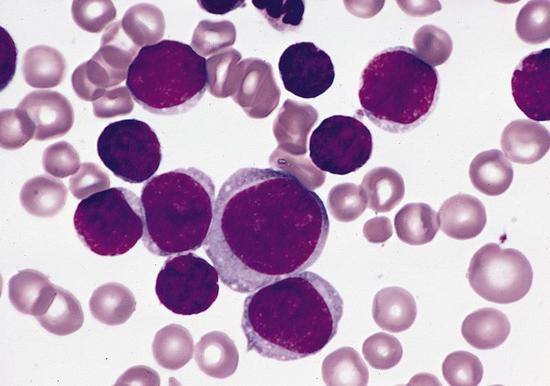 |
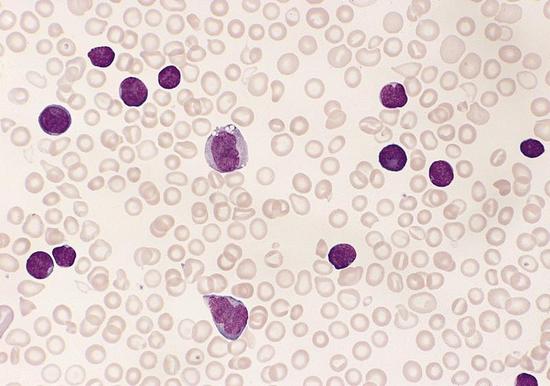 |
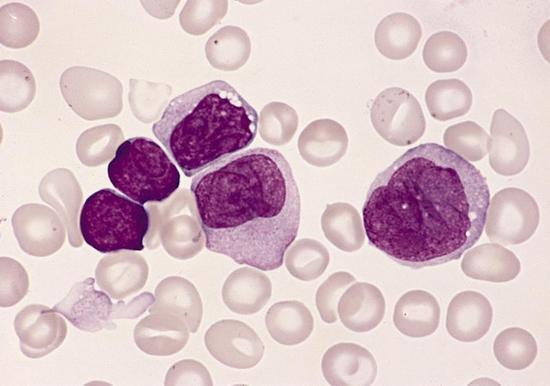 |
| Example bilineal leukemia, two distinct blasts present. |
Example bilineal leukemia, two distinct blasts present. |
Example bilineal leukemia, two distinct blasts present. |
Immunophenotyping
The CD45 vs SSC gating dot plot identifies a blast population which is CD45 dim/negative and SSC low.
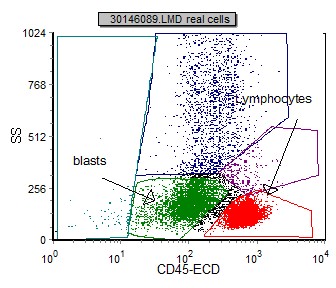 |
| Example gating dot plot from a case of biphenotypic acute leukemia. |
Below are example dot plots gated on the above blast poulation of a biphenotypic leukemia case
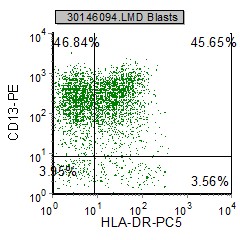 |
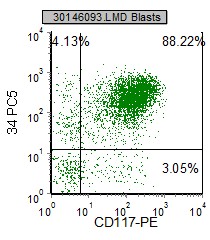 |
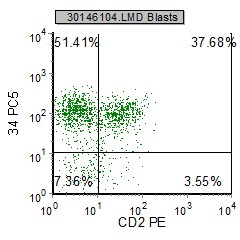 |
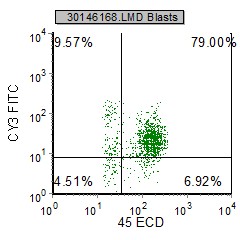 |
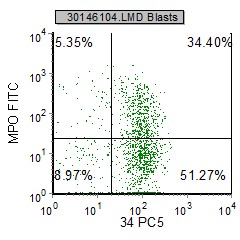 |
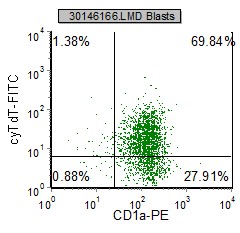 |
| The above dot plots show CD13 positive and cytoplasmic CD3 positive. | CD34, CD117, MPO and CD34 are positive. | TdT, CD1a and CD34 are positive. |
The differential diagnosis includes myeloid antigen-positive ALL or lymphoid-positive AML (from which biphenotypic acute leukemia should be distinguished) and minimally differentiated AML (from which undifferentiated acute leukemia must be distinguished).
Lineage Scoring
The European Group for the Immunologic Characterization of Leukemias has developed a scoring system based on degree of lineage specificity of each antigen. two or more points in two categories are needed to diagnose a biphenotypic leukemia.
| Score | B-Lymphoid | T-lymphoid | Myeloid |
| 2 | cyCD79a | CD3(surface/cy) | MPO |
| cyIgM | TCR | ||
| cyCD22 | |||
| 1 | CD19 | CD2 | CD117 |
| CD20 | CD5 | CD13 | |
| CD10 | CD8 | CD33 | |
| CD10 | CD65 | ||
| 0.5 | TdT | TdT | CD14 |
| CD24 | CD7 | CD15 | |
| CD1a | CD64 |
Other relevant tests
Genetics: Cytogenetic abnormalities are observed in a high percentage of bilineal and biphenotypic leukemias. [Approximately 33% of cases have the Philadelphia chromosome, and some cases are associated with t(4;11)(q21;q23) or other 11q23 abnormalities. In general, the prognosis appears to be unfavorable, particularly in adults; the occurrence of the translocation t(4;11) or the Philadelphia chromosome are especially unfavorable prognostic indicators.
Sub-classification
Acute bilineal leukemia
Defined as two separated blast populations, one myeloid and the other lymphoid, or rarely one B cell and one T cell. Acute bilineal and biphenotypic leukemias are less than 4% of acute leukemias. They often have a poor prognosis. DD: ALL or AML with aberrant antigen expression.
Acute biphenotypic leukemia
Less than 4% of acute leukemias. Also called acute mixed lineage leukemia.A single population of blasts expresses myeloid, and usually either B or T cell antigens; expression of B & T or B, T & myeloid antigens is rare. May derive from primitive stem cell with capacity to express markers of both myeloid and lymphoid lineage. They can be either de novo or therapy related, and often have a poor prognosis.
Flow Diagnosis
References
